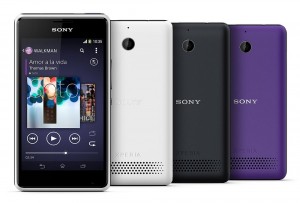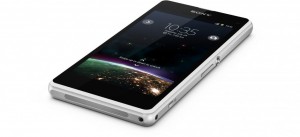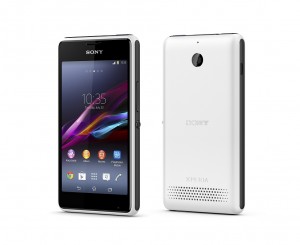
Remember Ericsson? Sony’s old partner in producing mobile phones continues to be an industry champion, though not in a visible way. Having left behind mobile phone production, they continue their long history in the construction of mobile network infrastructure, another multi-billion dollar industry hidden underneath the phones by our ears. Being one of the founding fathers of the telecom industry back in 1876, the Scandinavian company continues to shed light on where the telecom sector is and how it will change with industry-respected research. Did you know that another 3.7 billion new people will be smartphone users within just 5 years?
Total smartphone subscriptions reached 1.9 billion in 2013 and are expected to grow to 5.6 billion by 2019.
The surge in new smartphone users will come from Asia. 933m people in Asia were using smartphones up to the end of 2013, and that is heading towards 4 billion in just a few years. As developing economies generally evolve, the growth won’t be fueled by ultra-expensive-made-of-the-rarest-metal-you-can-only-find-on-Mars-flagships; instead, it will come in at the entry-level range, Ericsson points out.
But this seems to present a challenge for Sony. Sony Xperia product marketing manager Stephen Sneeden was quoted to CNET in January last year as saying that they couldn’t achieve the level of quality that is associated with the Sony brand at the entry-level price point, and that they may leave the entry-level segment alone to concentrate on the premium and mid-range areas. Their 2014 smartphone range seems to reflect this, with probably only the Xperia E1 checking in at the entry-level price point so far this year. So if Sony would like to tap into new sources of market growth, how could this be achieved without reestablishing itself in the entry-level segment to meet future growth?
Read on to hear more about what Ericsson predicts is coming in the next 5 years.

The Next 4 Billion
5.6 billion smartphone users by 2019, 3.7 billion new users within 5 years. So a smartphone boom is coming. The market has come a long way since the smart revolution which took over the industry in 2007, led by Apple with the original iPhone. Since then, competition from Google’s Android has helped make smartphones available at every price point, truly pushing the industry. But despite having crossed the 2 billion-user threshold things are still just warming up.
One of the main reasons for this is a notable increase in subscriptions in Asia-Pacific and Middle East and Africa, as medium-high income users in these markets exchange their basic phones for smartphones. This is due in part to the availability of smartphones in lower price ranges.
As of the Q1 of this year, the global mobile penetration reached 93 percent. Ericsson points out in its report Ericsson Mobility Report that the conversion from feature phones (non smartphones) to smartphones is still accelerating:
Around 65 percent of all mobile phones sold in Q1 2014 were smartphones.

Xperia Strategy: More Xperias Like U, E1?
The question for Sony is, is it still interested in entry-level devices? Probably only the Xperia E1 fits into the entry-level range of 2014 devices that they have released so far. Yet just last year, Sony Xperia executive Stephen Sneeden commented on why entry-level devices don’t suit Sony:
very entry-level is where you lose the ‘Sonyness’ and it’s where you cannot implement some of these wonderful things from Sony at such a low-cost.
(Sony) cannot compromise on the experience that the company is trying to show to the customer…
…might leave the very entry tier to some other manufacturers…
Maybe it’s not the flagship product, but I can still aspire to this other phone that has a number of these same characteristics.
Can Sony afford to maintain its watermark in smartphones of mid-range or higher? Industry thinkers (Business Insider, ZD.net, The Guardian) have been predicting for some time that the mighty Apple will bow down with cheaper iPhones in order to meet the entry-level Asian demand. Would Sony really continue on its current path and aim to cater to the crowd with the thicker wallets? That would mean lower market share as rivals grow on the back of the entry-level Asian smartphone boom. That would be a shame given that Sony has come up third behind Samsung and Apple in market share in Europe. On the other hand, if Sony does return to the entry-level, what can it do to retain this “Sonyness” as the Xperia executive mentioned?
Other Industry Developments from Ericsson’s Report
You know what they say about someone with a large pixel count? They spend more on data traffic, apparently. Ericsson’s research presents many links between the features of your device and who you are and how much your spending on it too. An intriguing correlation was made between higher pixel-density displays and higher data traffic use, a connection that won’t be lost by any smartphone manufacturer. So if you have an entry-level device, you are more likely to use your phone for more basic call and text functions. If you are using a 720/1080/4K device, you are likely burning your data like a formula one car tire burns rubber on the track. It seems logical when you read it but it’s not so easy to spot if you’re not aware of it. Again, this highlights a logical connection between premium device owners and the average monthly cost they give to their network/carrier. These are the details that make premium device shoppers so lucrative to everyone in the industry.
LTE Broadcast will address the growing consumer demand for video services by efficiently delivering video content with guaranteed quality levels. LTE Broadcast achieves these efficiencies by simultaneously delivering media content to multiple users over a single LTE data stream, rather than over a single data stream to each single user.
HD voice improves the quality of voice calls with a more natural sound, providing improved intelligibility and voice recognition including advanced noise cancellation in the device…HD voice has now been commercially launched by 100 operators in 71 countries.
As LTE is optimized for data transfer, it does not include the circuit-switched domain currently used for regular voice and SMS services. Many of the latest high-end LTE smartphones already have the embedded VoLTE chipset, and only require a software upgrade to enable VoLTE services.
You can read the more about the findings here – Ericsson Mobility Report.
Discuss:
Is Sony ready for the boom in entry-level devices?

You must be logged in to post a comment.